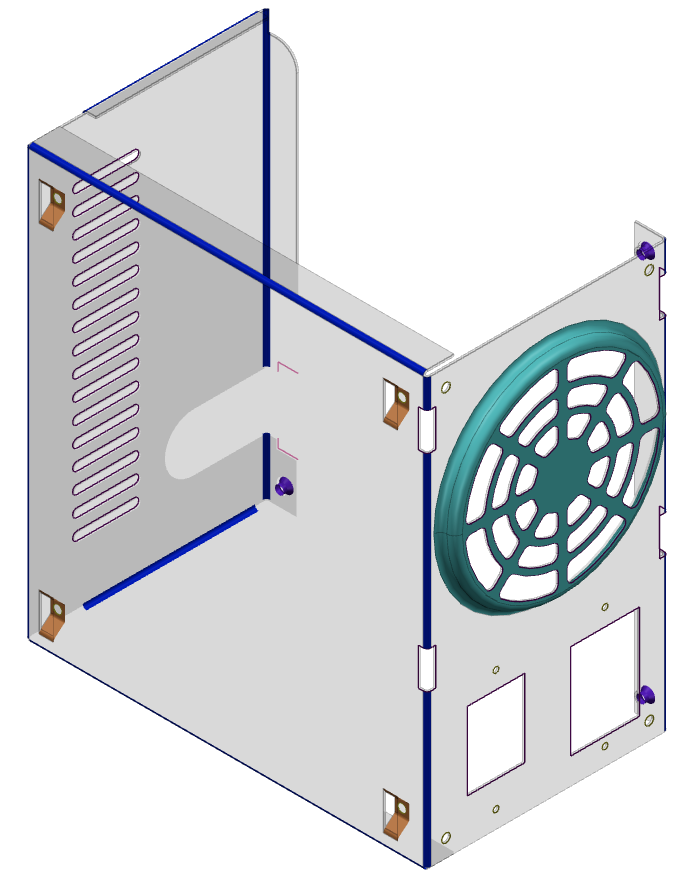Demonstrates how to perform recognition of sheet metal features on a 3D model and print information about found features and their parameters in a console.
This example demonstrates how to perform recognition of sheet metal features on a 3D model using sheet metal feature recognition tool (SheetMetal_FeatureRecognizer). For this purpose, used a console application that imports a model, traverses through unique ModelData.Part , creates and runs SheetMetal_FeatureRecognizer, groups and prints information about found features and their parameters into console. Sheet metal feature recognition will be performed for each unique ModelData.Part , but only for the scope of accepted geometries.
Application needs 1 input argument to run:
For more information about feature recognition visit Sheet Metal page.
PartProcessor class is inherited from ShapeProcessor and overrides ProcessSolid and ProcessShell methods that are used to run SheetMetal_FeatureRecognizer on given shapes. Then PrintFeatures method is used to print information about found features and their parameters in a console.
Visit Model Explore Helper Implementation page for more information about base ShapeProcessor class implementation.
To traverse only unique parts of the imported model, the ModelData.ModelElementUniqueVisitor class is used.
After performing feature recognition, the object of FeatureGroupManager class is used to group and sort found sheet metal features. For this purpose, there is a traverse through all found features and add each of them to FeatureGroupManager with a specified name.
After adding all found features to FeatureGroupManager, a Print method of the manager is used to print information about found features and their parameters in a console. PrintFeatureParameters is created to explore and print MTK feature parameters. It uses as an input parameter of Print method.
Visit Feature Group Helper Implementation page for more information about FeatureGroupManager class implementation.
Below is the example output for model from ./examples/models/Power_box_Chasis.stp.
| Model | Example output |
|---|---|

| Model: Power_box_Chasis
Part #0 ["power box sheetmetal"] - solid #0 has:
Bend(s): 8
2 Bend(s) with
radius: 0.7366 mm
angle: 90 deg
length: 1.15705 mm
width: 60 mm
2 Bend(s) with
radius: 0.7366 mm
angle: 90 deg
length: 1.15705 mm
width: 137.327 mm
4 Bend(s) with
radius: 0.7366 mm
angle: 90 deg
length: 1.15705 mm
width: 148 mm
...
Total features: 76
|